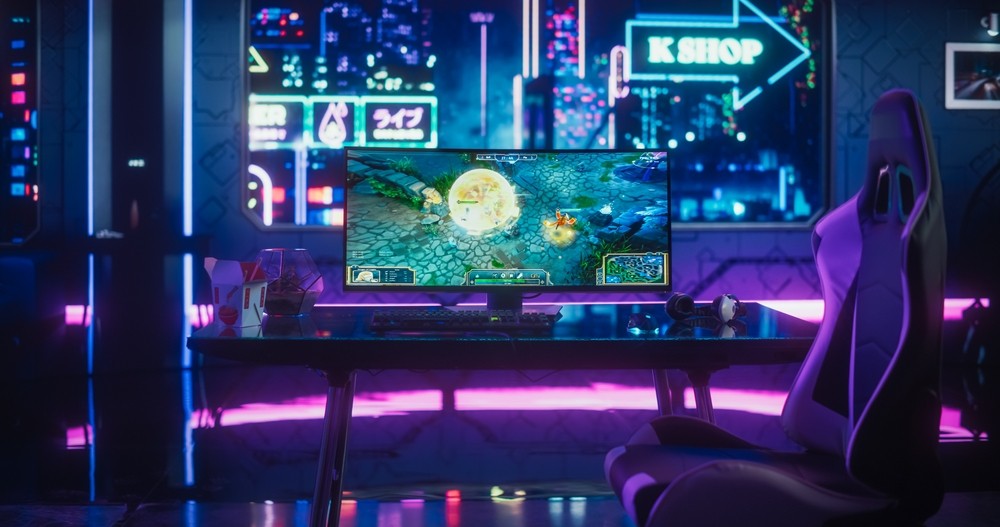As the final output device for your gaming rig, a high-performance gaming monitor can make a substantial difference in your experience. However, the market is flooded with monitors that boast numerous bells and whistles, many of which add more to the price than they do to the experience. For gamers seeking high performance without being distracted by unnecessary add-ons, there are certain things you should look out for.
Refresh Rate and Response Time
Core to any gaming monitor’s performance is the refresh rate and response time. These two specifications are instrumental in providing smooth and fluid gameplay.
Refresh Rate: The refresh rate, measured in hertz (Hz), refers to the number of times the monitor updates with new information per second. Gamers should aim for monitors with at least 120Hz, with 144Hz to 165Hz being optimal for a responsive, lag-free gaming experience. A higher refresh rate reduces motion blur, very beneficial in fast-paced games like first-person shooters (FPS) and racing simulators.
Response Time: This measure indicates how quickly a pixel can change from one color to another, usually represented in milliseconds (ms). A good gaming monitor should have a response time of 5ms or lower. Ideally, a 1ms response time is preferred for competitive gaming to minimize ghosting and blurring during fast movements.
These two specifications are fundamental and can be obtained without opting for exorbitantly priced models. They should be at the top of the checklist for anyone seeking high performance without the frills.
Resolution and Panel Type
Another crucial aspect to consider is the monitor’s resolution and panel type. Knowing what you truly need helps avoid overspending on unnecessary features.
Resolution: Standard resolutions for gaming monitors include Full HD (1920×1080), QHD (2560×1440), and 4K (3840×2160). While 4K offers the ultimate in visual fidelity, it is also demanding on graphics hardware and can be overkill for screens under 27 inches unless you have a very high-end system. QHD is often a sweet spot for offering increased detail without overloading your GPU, especially in 27-inch displays.
Panel Type: There are three prevalent panel types: TN (Twisted Nematic), IPS (In-Plane Switching), and VA (Vertical Alignment). TN panels typically offer the fastest response times and are the least expensive, but they can suffer in color accuracy and viewing angles. IPS panels deliver the best color reproduction and viewing angles but may come with slightly higher response times and price tags. VA panels provide the best contrast ratios, suitable for vibrant colors and deeper blacks but can sometimes fall short in terms of speed. Understanding these differences helps avoid paying for capabilities that might not be necessary for your gaming priorities.
Adaptive Sync Technology
Adaptive sync technology has transformed the gaming industry by eliminating issues such as screen tearing and stuttering. While there are two main standards, G-Sync by NVIDIA and FreeSync by AMD, many monitors now support both, allowing for versatile compatibility regardless of your graphics card brand.
For those using mid-range to high-end GPUs, ensuring your monitor has adaptive sync technologies can significantly enhance the gameplay experience without costing much extra. Many monitors now offer this as a standard feature, without lumping it with extras you might not use.
Build Quality and Ergonomics
While often overlooked, build quality and ergonomics are vital components of a high-performance gaming monitor. A sturdy and adjustable monitor stand can improve comfort during long gaming sessions, which in turn can enhance performance by reducing fatigue.
Investing in a monitor that includes VESA mount compatibility allows you to customize your desk setup according to your ergonomic preferences. Consider monitors with a sturdy construction that doesn’t sacrifice longevity for the sake of lightweight designs.
Color Accuracy and Calibration
Color accuracy can be a critical factor for gamers. For those who enjoy visually rich single-player games or require accurate color reproduction for game development or content creation, finding a monitor with good color calibration is important. However, many manufacturers now include pre-set modes for different gaming genres, which can significantly enhance the experience without the need for costly HDR (High Dynamic Range) capabilities that not all gamers will utilize.
Ultrawide color gamuts are great, but they might not be evident without expertly calibrated settings, so most of the time, a good sRGB coverage is all one needs, especially when budget constraints are in play.
Connectivity Options
High-performing gaming monitors should offer essential ports without excessive connectivity options you are unlikely to use. HDMI and DisplayPort connections are key; with DisplayPort often required for 4K resolution at higher refresh rates. A USB hub can be a practical addition, but it’s not essential unless you value accessibility for multiple devices.
Avoiding The Frills
When selecting a gaming monitor, it’s important to define your gaming needs. Here are some common features that you might not need, and can save money by avoiding:
- RGB Lighting: Often used purely for aesthetic benefit, RGB lighting can add a notable mark-up to a monitor’s price without enhancing gaming performance.
- Curved Screens: While they can provide a more immersive experience for ultrawide displays, they are not necessary for standard aspect ratio monitors. They increase costs and are generally better suited for very large screens.
- Built-in Speakers: These typically offer lower sound quality compared to dedicated gaming headphones or speaker setups and can take up cost points better used elsewhere.
- Touchscreen Capabilities: This feature has little to no use in gaming and can significantly increase a monitor’s price unnecessarily.
- Excessive Resolution: 8K or even 5K resolutions might sound appealing, but current gaming hardware struggles to achieve high frame rates at such resolutions, making them more of a future-proofing feature rather than a necessity for today’s gaming needs.
While these features may seem enticing, in practice they often contribute little to the core gaming experience and can inflate the cost unnecessarily.
By focusing on high-performance essentials such as refresh rate, response time, resolution, panel type, and adaptive sync technology, you can avoid spending on features that don’t enhance your core gaming experience. Striking this balance will provide an optimal gaming setup, where performance is prioritized, and your budget is respected.



